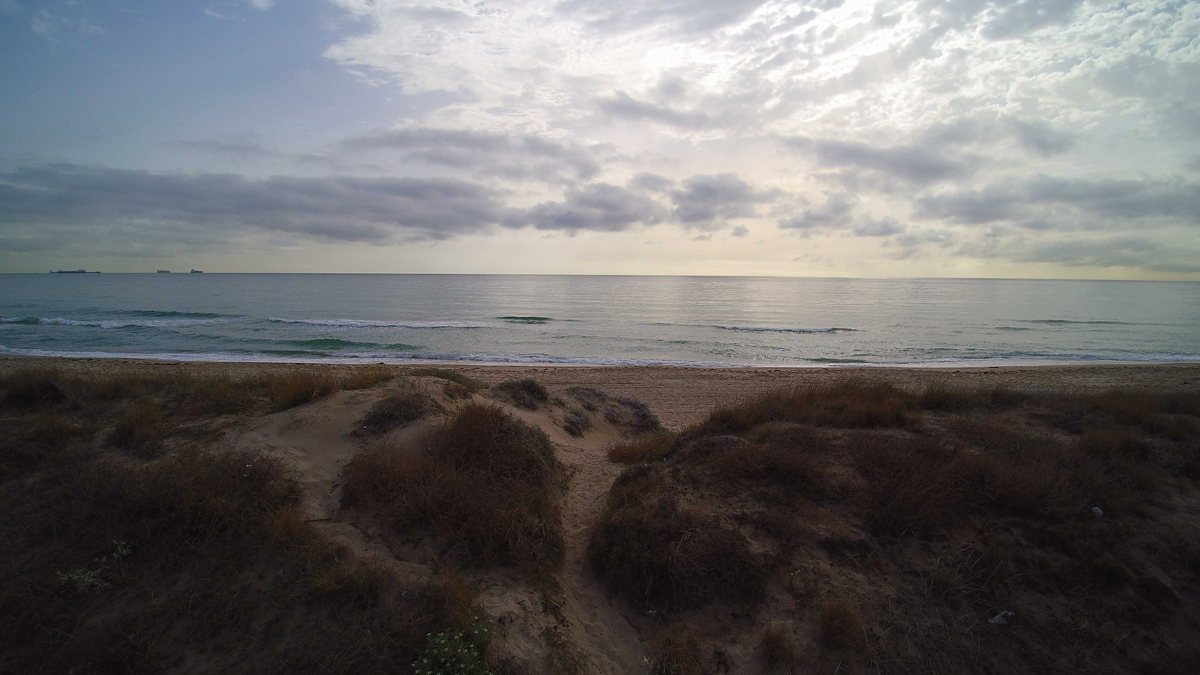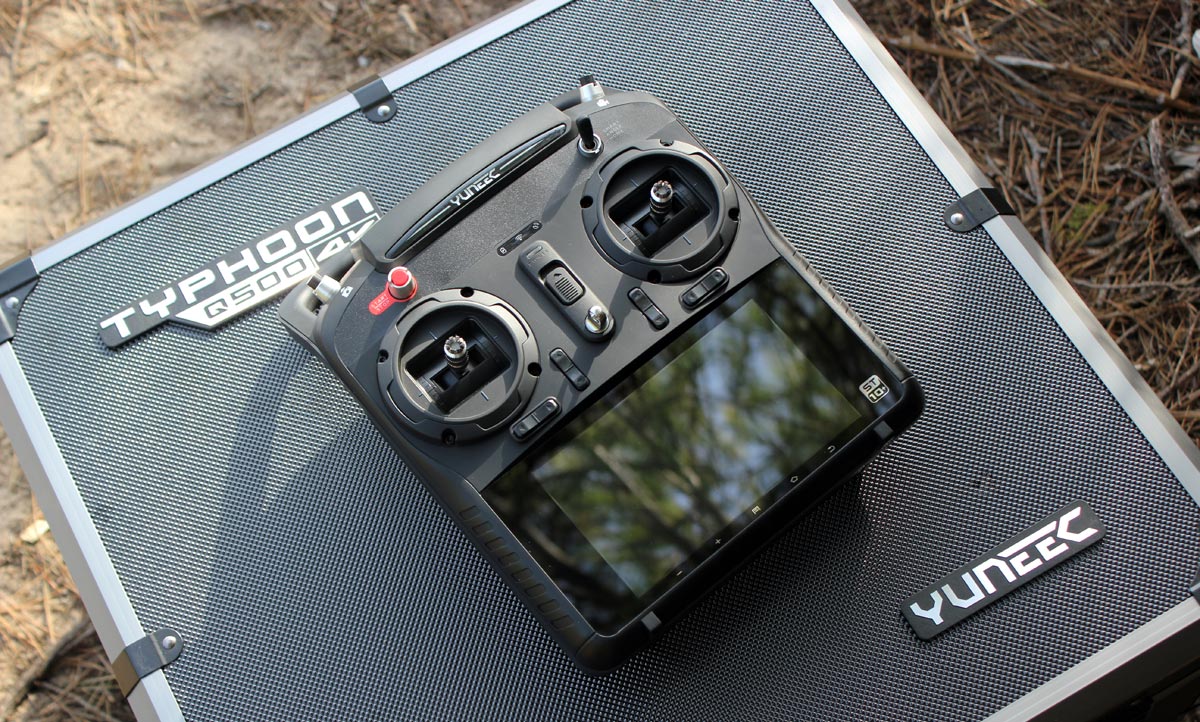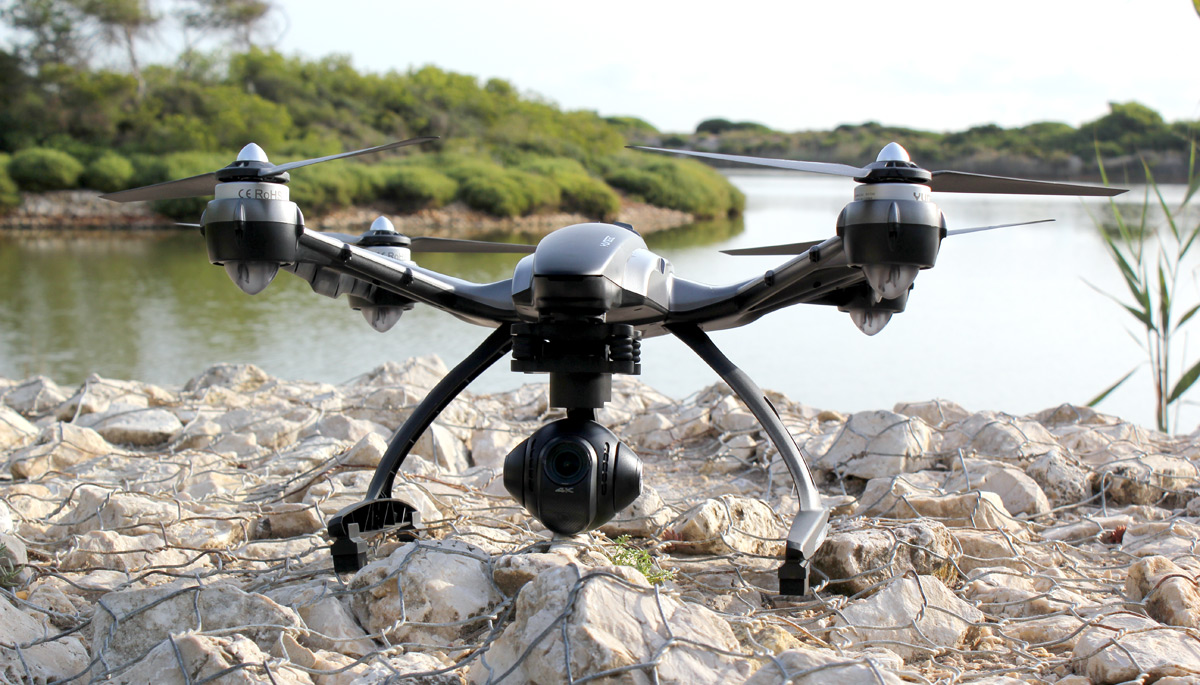Yuneec
Here’s why Intel can’t stop investing in drone companies
 Business Insider screenshot of Intel videoIntel CEO Brian Krzanich spies a drone
Business Insider screenshot of Intel videoIntel CEO Brian Krzanich spies a droneIntel has got a thing for drones.
The world’s largest chipmaker announced this week that it invested $60 million in a Chinese drone-maker, marking its third drone investment to date.
What’s does Intel see in unmanned aerial vehicles ?
The flying machines are packed with the kinds of sophisticated chips that Intel sells and the popularity of drones makes them an attractive new market for Intel to get a foothold in as its traditional PC business continues to decline.
Processors, WiFi chips and Bluetooth chips can all be used in drones, explains Mike Hung, an analyst with research firm Gartner. Because drones are equipped with technology such as high-definition video cameras for recording, there’s also a role for powerful graphics chips, he explained.
Still, while drones are a sexy market in the emerging “Internet of Things” sector, they won’t drive significant growth for the tech company in the near future, nor will drones replace all of Intel’s lost PC revenue, Hung noted.
“The drone market isn’t going to become as large or profitable as the PC market for another decade, if ever,” Hung told Business Insider. “But it’s got good proof points: it serves large networks the way Facebook is looking at it, [it can be used for] smart farming purposes, it monitors cell towers, and there’s recreational uses like recording your kid’s softball games. While the drone market isn’t as sizeable as PC or smartphone, its tech can be used for a lot of other purposes.”
According to a CB Insights report conducted earlier in May, drones startups are in vogue: they raised a record breaking $172 million in equity financing so far this year. Commercial usage for drones has been enjoying speedy growth, compounding more than 3 times as much as military use at 19 percent between 2015 to 2020.
Intel has already invested in two other drone companies, Airware and Precisionhawk.
In a video announcing Intel’s latest $60 million investment in Hong Kong-based drone and aerospace company Yuneec, Intel CEO Brian Krzanich said future product collaborations between the two companies will hopefully be a “gamechanger in the drone industry”.
Users will soon be able to open a box containing a little drone, controller and built-in screen. They would be able to fly the unmanned aerial vehicles using Android smartphones, and laypeople would be able to control them within five minutes of unboxing the product.
But while Intel is opening its wallet to show its love for drones, Gartner’s Hung noted that the company is unlikely to ever build and sell its own drone. Intel doesn’t like to sell “end-products” he noted, and will be content providing the innards for the new machines.
Intel and Yuneec International Announce $60 Million Investment and Future Product Collaboration
For those of us who use Yuneec products this is great news.
DJI’s Phantom 3 has it’s biggest rival in YUNEEC’s 4K Typhoon Q500
We’d understand if you’re not familiar with Yuneec; we’ve only written about its products twice. However, it’s fairly well-known in the quadcopter world, and best described as a direct rival to DJI. When I reviewed DJI’s 4K Phantom 3 Professional drone ($1,259), a reader asked if we could compare it to Yuneec’s rival Typhoon Q500 model (around $1,100, but with a lower-res 1080p camera). Days later, Yuneec announced an updated Typhoon with 4K shooting for $1,299, making the comparison much easier. It only seemed fair to grant our reader’s wish, and check out what the new Typhoon had to offer.
The similarities between DJI’s and Yuneec’s consumer quadcopters are many. Both have 4K cameras with stabilizing gimbals. Both are “ready to fly,” which mostly means there’s no assembly required; just charge and go. Both are easy for beginners to control, and both offer first-person view (aka FPV), or the ability to see what the camera is seeing in the air in real time, usually via the transmitter/controller. There are other products that offer a similar feature set, but DJI and Yuneec have done a good job packaging them in ways that appeal to new flyers and hobbyists alike.
There are also some significant differences and on paper, at least, many of them are in Yuneec’s favor. Despite being slightly more expensive, the Typhoon offers better value. The $1,299 4K version is available with a carry case (you’ll need to buy one for your Phantom). It also comes with two batteries versus one on the Phantom. Then there’s the transmitter, which has a built-in touchscreen display. This is how you view what the Typhoon’s camera sees (you can also use it to access settings). In contrast, DJI users need a phone to do this, this approach works well, but is one more thing to bring along/charge. The last, and perhaps coolest extra with the Typhoon, is the Steadygrip, a hand-held mount for the 4K camera. Detach it from the drone, clip it to the accessory and you can film smooth video on the ground, too. DJI’s working on a similar product, but it’s not available yet, and won’t ever be in the box of the Phantom 3 (the camera is non-removable).

You’re also getting more flight features with the Typhoon. The ground station has GPS in it (actually, most quadcopters do, but not always the transmitter). This means the Typhoon has options like “follow me” and “watch me,” which Phantom 3 doesn’t have right now (but some features are coming eventually). So, the Yuneec is the one to get, right? Maybe. The real test is taking it up in the air and shooting some video. Which is, of course, what I did.
I’ll preface my impressions by stating that I learned to fly on a Phantom, and have flown one for many hours, so this is what I am used to. Yuneec made the Typhoon pretty easy to fly. I had a few minor wobbles the first time, but this might be because of my prior Phantom experience. One example is that, by default, the Typhoon won’t fly within 26 feet of you (or, really, the transmitter).
This caught me off guard when I first tried to land, as I’m used to bringing the Phantom in real close, and sometimes “catch landing” (getting it low enough to hold the landing gear, and make it think it’s on the ground). I had the Typhoon above water, and it wouldn’t come nearer. I had to walk backward far enough to be able to land it on solid ground, and not in an ideal spot (see the photo at the top of this article). The same problem can catch you out mid-flight, too. It’ll suddenly stop moving as it hits the exclusion zone around you. I get it; it’s a safety feature (and one you can turn off).

The Typhoon’s biggest problem in the air, I found, was that it’s not as responsive as the Phantom. DJI’s consumer product is quite a bit smaller, and responds quickly to any touch on the controls. You can throw it left to right quite sharply, and it’ll visibly pitch (but hold its position), and it manages to do so while keeping the camera steady — though if you really throw it, the landing gear/propellers can get in the shot. The Typhoon felt more sedate. Not sluggish, but less immediate. You can control its speed, but that doesn’t change the general responsiveness. Some might say this is a benefit, since I only once got propellers in the shot. But I do prefer the tighter feel of DJI’s setup.
What the Typhoon does have going for it is excellent battery life, so you get more time in the air. On average I got 20 minutes before it would start warning me to bring it home. The Phantom 3 starts complaining between 15 and 17 minutes, I’ve found. It might not seem like a big difference, but those extra few minutes feel like hours when you’re behind the sticks. One minor thing: I’ve never been a fan of how the Phantom 3 looks, but I like the Typhoon even less. As one colleague put it, it looks like it should fire Nerf bullets. It’s a little… on the boyish side. The Phantom 3 isn’t handsome, but smaller and more unthreatening.
Most important for many people will be the quality of the camera. The quadcopter is going to be secondary for customers that are interested in the aerial video first. Here, I think DJI wins. The camera on the Typhoon is pretty decent, but it reacts to different light conditions with mixed success. In the sample video, you can see the difference with the direct sun in the opening clip (the second clip is just moments later, without the sun in shot), or spot the color/temperature of the ground change as I adjust the camera pitch between the 1:50 and 1:56 minute mark. On a positive note, there’s very little fish-eye curving going on, and the results are generally pleasing. But, between the two, the Phantom 3 Professional appears to have the edge.
With more time, I might get to love the Typhoon a bit more, who knows. Right now, though, I’m still leaning toward the Phantom 3. The Typhoon definitely offers more value, and the extra flight features will appeal to some people. But, if your priority is video and photos, or ease of flying, or both, the Phantom 3 steals it.
http://www.engadget.com/2015/08/16/yuneec-4k-typhoon-drone//








